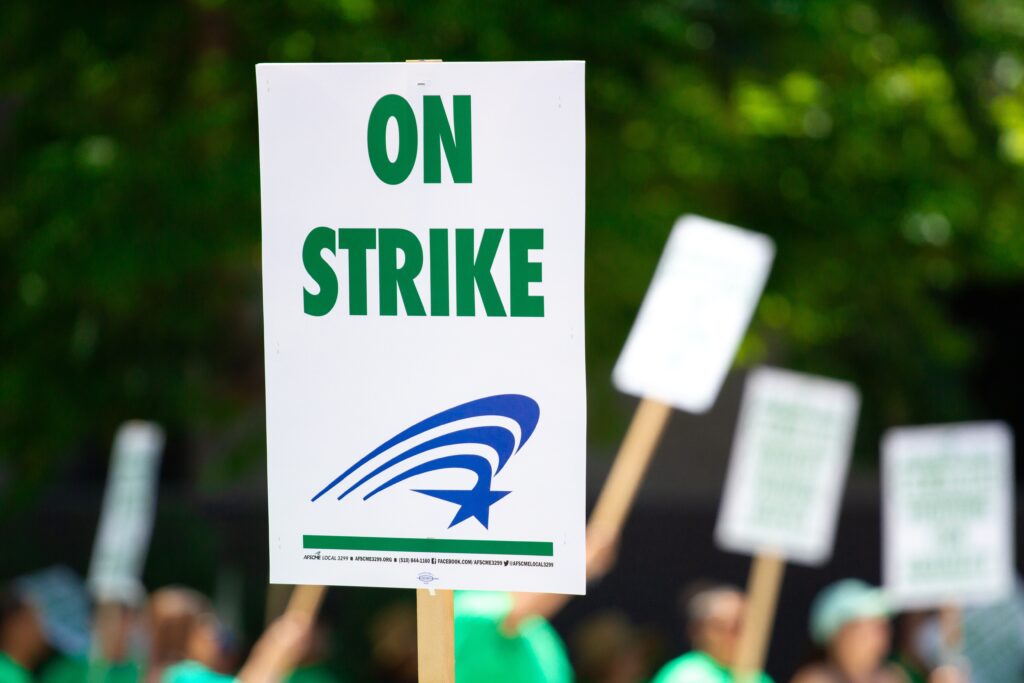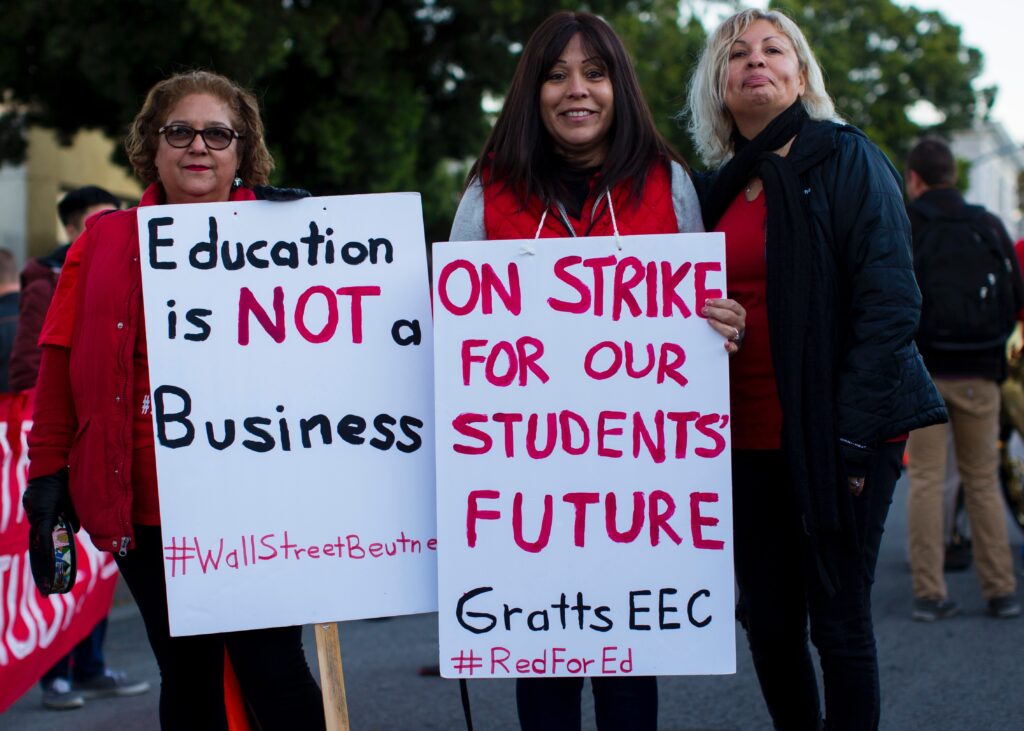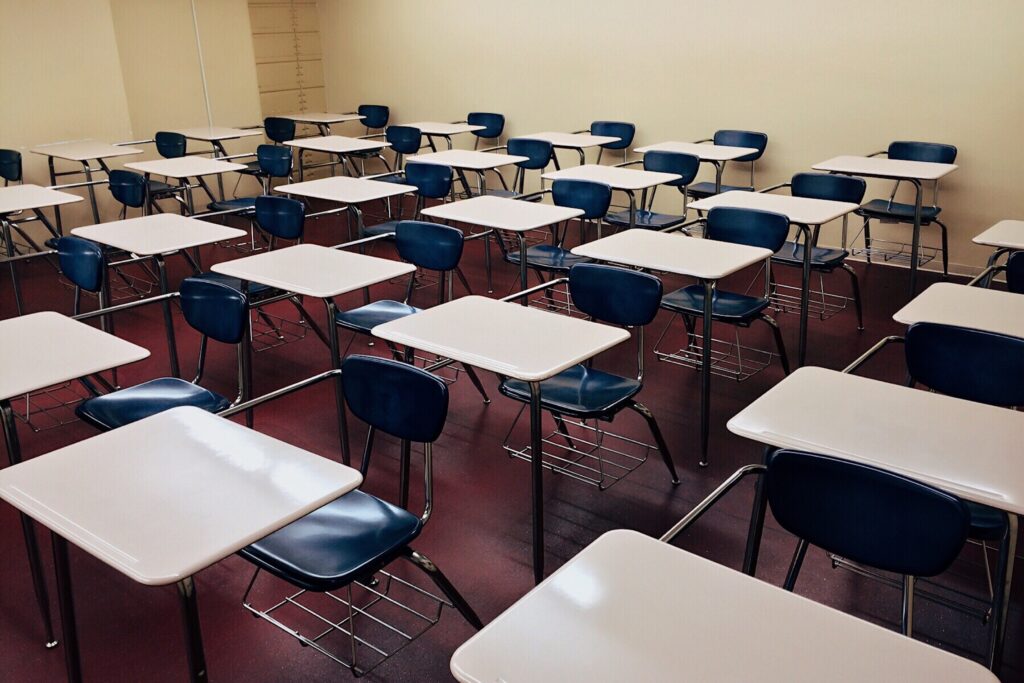Teacher Strike – Could It Happen In Your School District?
Could a teacher strike happen in your district? There's a lot to know about this action as the educational landscape constantly changes

With more and more public school workers becoming disillusioned with the job, and continued strife over pay and benefits in certain districts around the country (and really throughout the world), could we see these frustrations boil over? There’s certainly a chance and sometimes that came come in the form of a teacher strike. While it is typically the point of last resort for many unions, there have been plenty of examples of teacher strikes in the past. And in some districts, things are looking like they could go that way before it’s all said and done.
Let’s take a look at what it means for a school, district, or city to have a teacher strike. What does it mean for the students and the educational landscape? And how could something like this come to pass with a group of educators?
WHAT IS A TEACHER STRIKE?

On its simplest level, a teacher strike is exactly what it sounds like. It means a group of teachers, working as one labor group, have found it in their best interest to refuse to work for a set amount of time until contract demands are met or work conditions are changed. In the history of labor movements, strikes have long been used to apply pressure to management, ownership, or government leaders as a way to bring a cause to light or to negatively affect and impact a certain sector. A teacher strike follows the same methods as other labor groups in that a group of teachers will refuse to work, thereby making schools very difficult to run. Seeing as how students will be showing up at school to learn, a teacher strike can mean a significant interruption in scheduled instruction.
A teacher strike typically happens during a contract negotiation with either a Board of Education or other similar groups and a strike is used when it appears the sides are very far apart in terms of demands, wants, or needs. For many, a teacher strike is seen as a measure of last resort because while it can apply pressure during negotiations because of the logistics, there can be significant negative down-chain effects of going this route. It may not be looked about in a favorable light among local citizens and the educational needs of the students fall to the wayside.
WHAT HAPPENS WITH A TEACHER STRIKE?

There is a range of outcomes around what can happen with a teacher strike. For starters, in some states, a teacher strike is illegal and can have serious ramifications for union members. Because it is against the law in some places for public workers to have a work stoppage there can be arrests made (usually as just a sign of reprimand) for individuals within the group. In other places, a teacher strike can mean a loss of a teaching license or a suspension of some sort as a form of punishment. Again, this varies by state so checking with local and state laws will give the specifics around a teacher strike in your area.
Additionally, though it might not be expressly illegal for a teacher strike to happen, there are maneuvers local groups can take in order to try and prevent one. For instance, a local injunction can be filed and it is a court order to make a particular act illegal.
And because in many states, school attendance for students is mandatory, the question becomes how a school or district operates during a teacher strike. Students are still coming to school but what happens to them once they are there? Often a district has to exhaust the pool of substitute teachers available and also put in administrators (not part of the same union) in the position of overseeing large groups of students. There is often limited educational productivity happening during these times seeing as how it can become an all-hands-on-deck situation.
WHAT IS THE LONGEST TEACHER STRIKE?
This is a record that really no district or teacher’s union would want to break. Not at all. Now, over the years there have been plenty of bigger, high-profile teacher strikes. For instance, the New York City Public Schools were facing a teacher strike back in 2020 at the onset of the school year. One of the largest unions in the city didn’t want to go back to in-person instruction at that time and threatened to strike if the system mandated it. It was avoided but there was considerable consternation.
Also, back in 2019, the Los Angeles Unified School District saw a 30,000 teacher strike for six days in January. It was the first strike for that city in 30 years. And it led to others across the nation around the same time with teachers arguing for higher pay.
But the longest teacher strike on record dates back to 1987 when teachers in Homer, Illinois went on strike for eight months. How did the district handle this? Well, apparently they were able to hire enough substitute teachers to fill in for those who weren’t there.
FINAL THOUGHTS
Again, a teacher strike isn’t an everyday occurrence and it typically takes considerable strife in negotiations to even consider getting to this place. But it’s worth it to check your local and state laws to see if it is even a possibility in your district. With more teachers becoming disillusioned with educational philosophies and more unions arguing for higher wages, it stands to reason we could see these crop up in coming years.
While many a teacher strike has just about the monetary bottom line, if more unions begin standing up against educational practices as well. If this ends up being the case, we could see an uptick in teacher strikes. Time will tell on that front.



